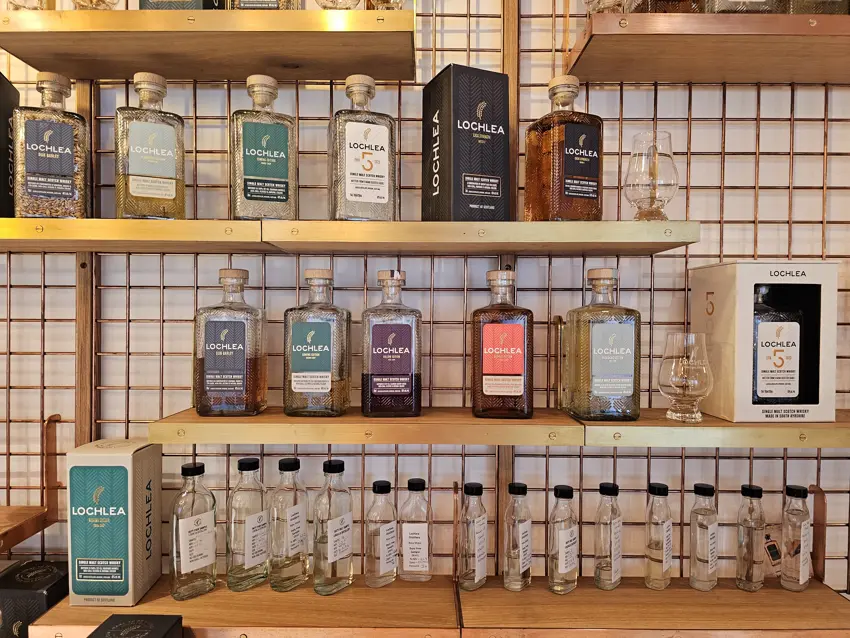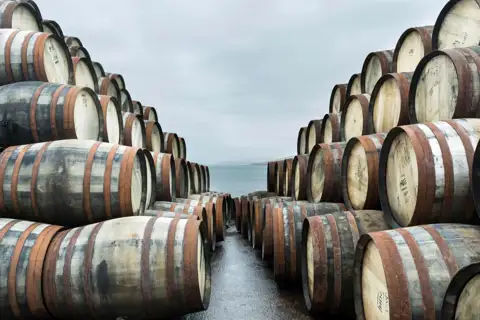Too Much Too Soon? Cask Whisky Expressions
Colin Hampden-White explores new brands and discusses if they have released too many new expressions in the quest for attention through innovation and lost their identity before it's even been found?
Colin Hampden-White
Table of contents
- How Whisky’s New Wave Lost Its Voice, and Is Learning to Find It Again
- The Problem of Proliferation
- The Urge to Impress
- The Consumer’s Perspective
- A Course Correction
- Less, But Better
- The Way Forward
How Whisky’s New Wave Lost Its Voice, and Is Learning to Find It Again
In the last decade, the world of whisky has undergone a renaissance. New distilleries have blossomed across Scotland, England, Ireland, America, and far beyond, breathing fresh energy into an industry steeped in tradition. Enthusiasts, collectors, and casual drinkers alike were initially captivated, each new name on the label seemed to promise a bold adventure, a novel terroir, a chance to taste history in the making.
But somewhere along the way, excitement blurred into confusion. With so many new expressions flooding the market, often from the same fledgling distilleries, the clarity of these distilleries' identities became lost. And now, as the initial euphoria fades, the whisky world is facing a sober truth: in the rush to impress, too many distilleries have forgotten to first tell drinkers who they are.

The Problem of Proliferation
It is not uncommon today to see a five-year-old distillery with a dozen different releases under its belt: virgin oak finishes, PX sherry finishes, port pipes, rum casks, beer casks, the list goes on. Each bottle might be fascinating in isolation, but together they form a confusing mosaic. What is the distillery's true character? What is the whisky’s voice beneath the loud garments of finishing casks?
In traditional whisky making, the distillery’s spirit—its "new make" character—was paramount. Is it heavy and oily like Mortlach? Light and estery like Glen Grant? Fruity and waxy like Clynelish? These were the fingerprints, the soul of the place. Casks added complexity, yes, but they were never supposed to disguise the spirit’s essence.
With many of today’s newcomers, however, it has become difficult to tell what the spirit itself is like. Overwhelmed by various wood influences, the core character often gets lost. Drinkers are left guessing, and worse, left unmoored. Without a clear anchor, there’s little reason to remain loyal to one new distillery over another.

A few of the many expressions of Loch Lea
The Urge to Impress
The motivations behind this proliferation are understandable. Young distilleries, facing the reality of long cash flow gaps, feel enormous pressure to release products early—and to keep releasing. A single cask finished in an exotic wine barrel draws attention, while a simple, honest, bourbon-matured three-year-old might not. In the fiercely competitive whisky landscape, novelty can mean survival.
Moreover, the whisky media and collector community have played their part. Limited editions, cask strength anomalies, and experimental bottlings are catnip for those eager to find the "next big thing." Retailers too push for differentiation: a private cask here, a store exclusive there.
The result has been a glut of offerings that, ironically, cheapen the overall perception of a new distillery rather than enhance it. In attempting to showcase versatility, many have sacrificed clarity.
The Consumer’s Perspective
From a drinker’s standpoint, this deluge can be overwhelming. Loyalty requires understanding; understanding requires consistency. When each expression tastes dramatically different from the last, there is no clear thread for consumers to grasp.
Imagine trying to get to know a person whose accent, style, and mannerisms changed every time you met them. Trust and familiarity, the building blocks of long-term affection, become impossible. The same applies to whisky. Without a consistent flavour profile or recognizable house style, new distilleries struggle to build enduring relationships with their customers.
This confusion is magnified when marketing messages trumpet innovation over authenticity. A new sherry cask finish may grab attention, but unless the underlying spirit has already been established and appreciated, it feels hollow and more gimmick than craft.
A Course Correction
Fortunately, the industry is beginning to recognize this. A quiet but important shift is underway: an emphasis on fewer, more carefully curated core expressions that showcase the distillery’s house style.
Take, for example, Raasay Distillery, off Scotland’s northwest coast. After several experimental "while we wait" releases, Raasay launched a core expression that captures their lightly peated, fruity spirit matured primarily in ex-bourbon and rye casks. It is a whisky designed not to dazzle with novelty but to build trust.
Similarly, Loch Lea in the lowlands of Scotland released a blizzard of limited releases, most prominently their seasonal releases of which there were four a year. The last of these is now released, and what is to follow will be significantly less seasonal and more consistent. Ironically, Loch Lea had a core whisky called Our Barley, but this expression became lost in the plethora of other releases.
In the United States, Westward Whiskey, after several limited editions, chose to double down on a single, signature American single malt style, fruity, bold, and cask-forward, but consistent enough that consumers can recognize its thumbprint across bottlings.
These examples signal a maturing approach: one where distilleries realize that longevity depends not on being the loudest in the room, but on being the most genuine.
Less, But Better
The art of distilling has always been as much about patience as about passion. It is heartening to see newer distilleries rediscovering the wisdom of restraint. Rather than chasing every trend or launching an endless succession of limited casks, the best are focusing on nailing the fundamentals: producing a spirit with a sense of place, a recognizable texture, a distinct voice.
A strong core range tells a drinker, "This is who we are." It offers a foundation upon which future experiments can stand. Only after a distillery’s core identity is established can cask finishes, single casks, and limited editions feel meaningful rather than arbitrary.
The Way Forward
Whisky’s allure has always rested on two intertwined things: mystery and familiarity. We crave the new, but we trust the known. For the new generation of distillers, success will not come from how many expressions they can launch in five years, but from how deeply they can root themselves in the minds and palates of their drinkers.
A single whisky, perfectly made, can say more about a distillery’s soul than a dozen half-hearted experiments. In an age of endless options, clarity becomes a rare and precious virtue.
And so the new wave of distilleries, having briefly lost their way in the exuberance of youth, seem to be finding their feet, maturing, like the spirit itself, into something truly worth savouring.



